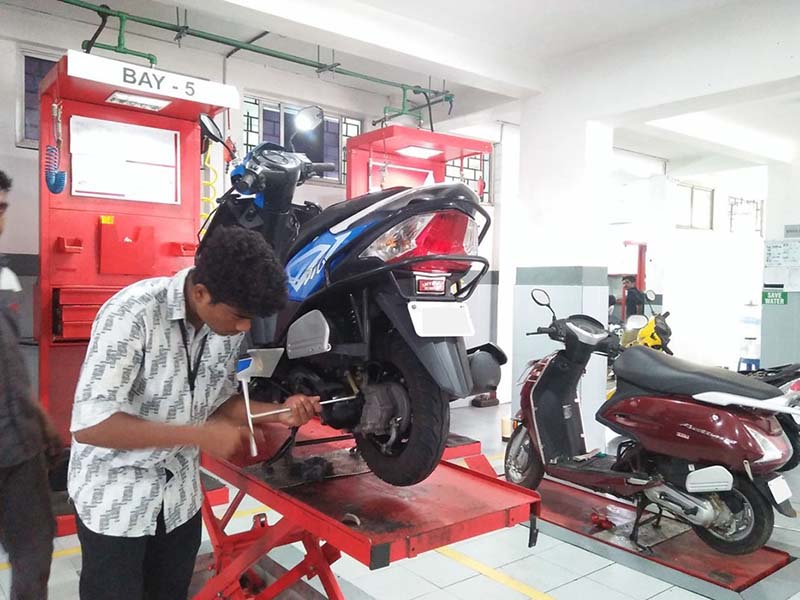In about the last three decades, India has achieved notable social and economic progress. The middle class is expanding and poverty alleviation measures, particularly those of the INC, have borne fruit. Access to critical education and basic health care has also expanded. In summary, prosperity is being shared across multiple segments of the Indian population. However, for the pie of prosperity to keep increasing and percolate further deep, adequate human capital for needed productivity growth is fundamental.
About 64% of India’s population is expected to be in the working age group of 15-59 years by 2026 (Ernst and Young). Also, India is expected to have the biggest workforce in the world by the year 2025. Companies in significant productive sectors of the Indian economy should be generating considerably more and better-quality jobs as an offset to rapid technological changes that threaten to inflate greatly the existing gap between available generic skill-sets and those demanded by a globalized labor market.
In this context, the National Skill Development Programme that was launched in 2010 by the then UPA government was a significant game changer. The program was repackaged as Skill India in 2014 by the BJP-led NDA government. Also, it is notable that the National Skills Qualifications Framework (NSQF), which was notified on 27th December 2013, is a competency-based framework that classifies all qualifications according to a series of layers of knowledge, skills and professional aptitude.
The general consensus is that Skill India under the NDA has been a failure. In fact, the 2017 Committee for Rationalization & Optimization of the Functioning of the Sector Skill Councils (SSCs) report noted that the government’s goal of skilling 400 million people under the National Skills Development Programme 2015 was too large, unnecessary and unattainable.
Exhibit 1: India’s Education and Skill Development Structure
Image Source: World Bank; Konrad-Adenauer-Stiftung
In order to reclaim the intended effectiveness of the original National Skill Development paradigm, it is now important to develop integrated policies that can reinforce the roles that family circumstances, the larger labor market, and the available physical and social infrastructure can play in the development of usable human capital.
Given India’s socioeconomic profile, skilling programs should not pivot on the formal sector alone, but must accord importance to the informal sector too. In this context, employer-driven accreditation and standards can play a crucial role. Thus, involving the private sector and industry in planning policy developments, in conjunction with customary government agencies, may prove useful.
It is becoming increasingly clear that Artificial Intelligence (AI) and advanced robotics will both generate totally new careers or jobs; and, through enhanced productivity gains, produce greater economic prosperity. Though the net impact of automation on the Indian workforce, especially manufacturing, is still unclear, there is a growing necessity for focusing on the question of skills.
Building essential skills for India’s economic future with a specialized focus on digital work systems and analytics capabilities is key for leading in science, technology and innovation fields. This will assume significant importance in terms of facilitating the Indian workforce to quickly adapt to shifting skills requirements as disruptive technologies start dominating and automation begins displacing some jobs.
If India’s skills policy lags behind in terms of improving digital skills, there is the real risk of economic innovation becoming sluggish, amplifying the possibility of considerable job losses in the future. The rise of AI is a torchbearer signifying dramatic changes in incumbent business sectors. Without an adequate skills framework for skills development, the economic transition can be fairly brutal on many segments of the national workforce, particularly the youth. India needs to be ready.
Also, the ongoing COVID-19-related conditions facing Indian internal migrant workers is heralding a much-needed national catharsis on how we treat this extremely vulnerable section of the nation’s population. Millions of Indian workers have moved from state to state seeking livelihoods and better opportunities.
As Covid-19 further accelerates digitization trends, it is to be anticipated that technology will act more stridently as a lever to boost productivity and shareholder prosperity. There is nothing inherently wrong about this situation. However, it is vital to consider worker segments who could get particularly marginalized by such trends, as this can enlarge wealth inequality exponentially and hollow out vibrant middle-class sections. Vulnerable worker cohorts need to be bolstered as the tide of technological innovation rises.
However, it is easier said than done. One option could be to improve collection and processing of labor market data more systematically to increase chances of creating viable-pay jobs across Indian states. In other words, the labor data system has to help drive better precision in identifying supply and demand vectors on a nationwide basis. This can help the nation’s informal workforce (including those self-employed and casual labor), also, in terms of availing an upward spiraling arc of structured training and skilling opportunities throughout life.


